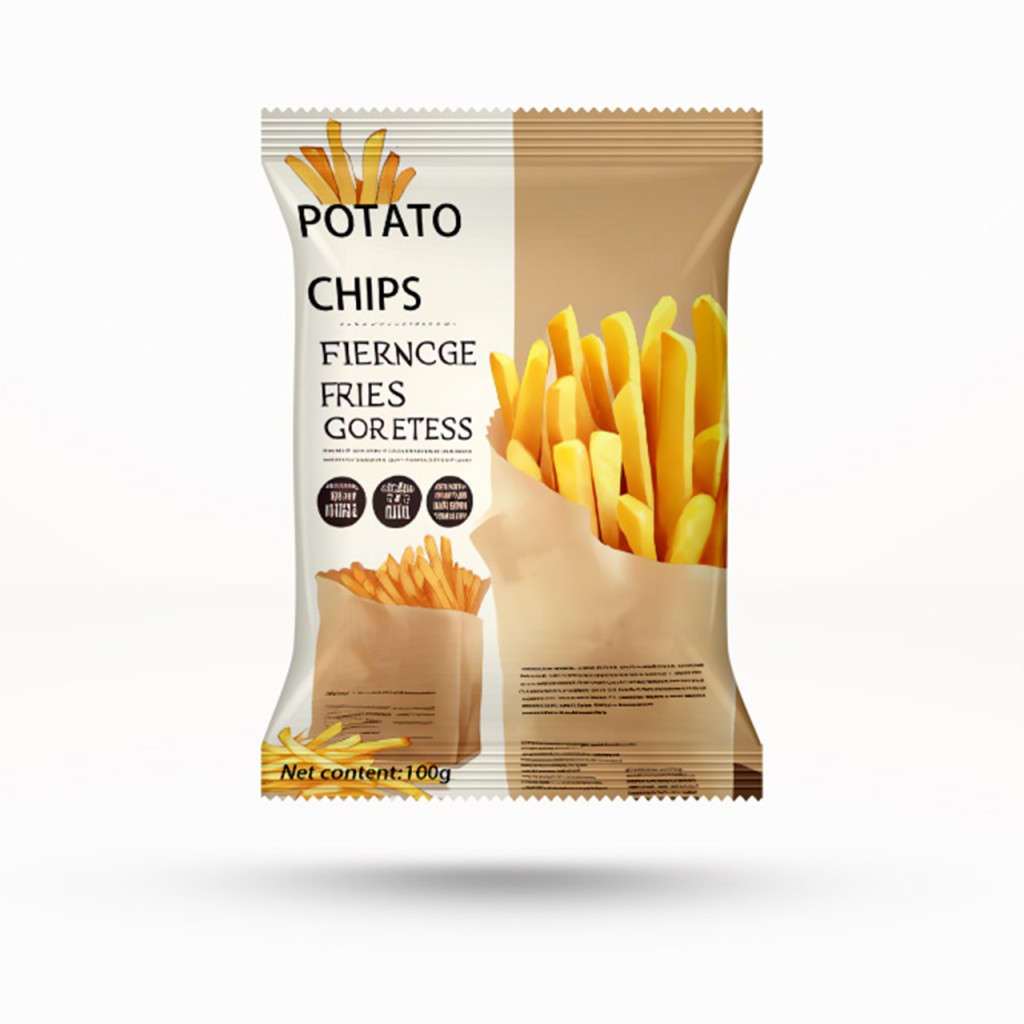As global environmental concerns rise, businesses across various sectors, including the snack packaging industry, are increasingly turning to eco-friendly solutions. Sustainable snack packaging is no longer just a trend—it’s becoming an essential strategy for brands committed to reducing their environmental footprint and appealing to a growing segment of eco-conscious consumers.
In this article, we’ll explore the key benefits of making the switch to sustainable snack packaging and why it’s a wise decision for brands in the snack industry.

1. Lower Environmental Impact
One of the primary advantages of adopting sustainable snack packaging is its positive effect on the environment. Conventional packaging often relies heavily on non-biodegradable plastics, which contribute significantly to global waste. These materials can take hundreds of years to decompose, causing lasting damage to ecosystems and wildlife.
In contrast, sustainable packaging options such as biodegradable, compostable, or recyclable materials are designed to reduce waste and pollution. Brands using eco-friendly packaging can drastically lower their environmental impact by selecting materials that break down naturally or can be reused, helping to preserve the planet for future generations.
Types of Sustainable Packaging Materials:
- Compostable Films: These materials degrade completely, leaving no harmful residues.
- Biodegradable Plastics: Made from renewable resources like corn or sugarcane, these degrade much faster than conventional plastics.
- Recycled Materials: Using post-consumer recycled content reduces the need for new resources and supports waste reduction efforts.
2. Aligning with Consumer Preferences
Sustainability has become a critical factor for today’s consumers, with many seeking brands that share their eco-friendly values. Studies have shown that a growing percentage of consumers are willing to pay more for products packaged in sustainable materials, as long as it aligns with their commitment to reducing their environmental impact.
By adopting sustainable snack packaging, brands can cater to this growing demand, strengthening their relationship with eco-conscious consumers. It demonstrates a brand’s commitment to the environment, which in turn builds customer loyalty and trust.
How Consumers Benefit:
- Peace of Mind: Shoppers feel good knowing their purchase helps reduce plastic waste.
- Eco-Friendly Choices: Clearly labeled sustainable packaging guides consumers toward environmentally responsible options.
3. Potential Long-Term Cost Savings
While sustainable packaging materials can initially be more expensive than traditional plastics, they can lead to long-term savings. As technology advances and eco-friendly materials become more widespread, costs are likely to decrease. Additionally, businesses may avoid future regulatory penalties by switching to sustainable packaging early.
In some cases, companies can reduce disposal and waste management costs by using recyclable or compostable packaging. These factors, combined with growing consumer demand for sustainable options, make eco-friendly packaging a smart long-term investment.
4. Enhanced Brand Image
Switching to sustainable packaging helps enhance a brand’s image, especially in today’s marketplace, where consumers increasingly value social responsibility. By taking steps to reduce waste, brands position themselves as environmentally conscious, which resonates with modern shoppers.
Eco-friendly packaging also differentiates products on store shelves and provides a compelling story for marketing efforts. Highlighting sustainable practices can attract positive attention from media, influencers, and consumers, driving organic promotion and brand awareness.
Marketing Benefits:
- Positive Publicity: Sustainable efforts often attract favorable attention in the media.
- Consumer Engagement: Eco-conscious consumers are more likely to share their purchases on social media, promoting the brand naturally.
5. Compliance with Evolving Regulations
Governments around the world are introducing stricter regulations around plastic waste and packaging materials. From banning single-use plastics to requiring businesses to adopt recyclable or biodegradable alternatives, regulatory pressures are increasing.
By proactively switching to sustainable packaging, snack brands can ensure they stay ahead of these regulatory changes. This approach not only reduces the risk of fines and penalties but also positions companies to adapt seamlessly as stricter packaging standards come into effect.
Examples of Regulations:
- EU’s Single-Use Plastics Directive: Restricts single-use plastic items to combat marine litter.
- California’s Packaging Law: Requires all plastic packaging to be recyclable or compostable by 2032.
6. Opportunities for Innovation
The sustainable packaging industry is rapidly evolving, with new materials and innovations emerging regularly. By embracing eco-friendly packaging, brands can position themselves as leaders in sustainability and innovation. Offering unique packaging options—like plant-based wrappers or reusable containers—creates a distinct edge in the marketplace and appeals to consumers who prioritize forward-thinking brands.
Examples of Innovative Packaging:
- Edible Packaging: Made from seaweed, this option provides a novel, zero-waste solution.
- Reusable Snack Pouches: These allow consumers to reuse the packaging, cutting down on waste and providing added value.
7. Supporting the Circular Economy
Switching to sustainable snack packaging also supports the growing movement toward a circular economy. Unlike the traditional “take-make-dispose” model, a circular economy emphasizes resource reuse, recycling, and reduced waste. Brands adopting eco-friendly packaging play an essential role in minimizing resource extraction and waste creation, helping to conserve valuable resources and reduce environmental strain.
Sustainable packaging materials that are recyclable or made from post-consumer content help close the loop, ensuring that materials are reused and remain in circulation for as long as possible.
Conclusion: Making the Switch to Sustainable Packaging
The benefits of transitioning to sustainable snack packaging are clear—from reducing environmental impact to enhancing your brand’s image and meeting consumer demand. As regulations tighten and technology improves, sustainable packaging is no longer optional; it’s a business imperative.
Brands that make the switch to eco-friendly packaging now will not only contribute to a healthier planet but also gain a competitive edge by appealing to the growing market of environmentally conscious consumers. The time to embrace sustainable snack packaging is now, and those who do will be well-positioned for future success.
Company Introduction: At Colorful Packaging, we specialize in high-quality, eco-friendly packaging solutions tailored to the needs of snack brands worldwide. Our commitment to sustainable materials and innovative design helps you reduce your environmental footprint while creating eye-catching packaging that stands out on store shelves. Contact us today to explore our full range of sustainable snack packaging options.

